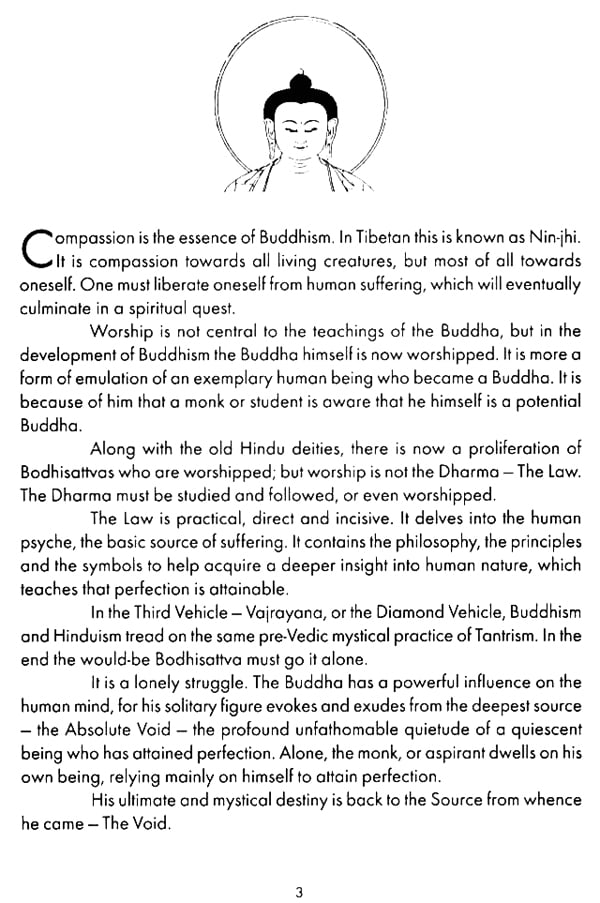
Sacred Symbols of Buddhism
Book Specification
| Item Code: | NAX743 |
| Author: | J.R. Santiago |
| Publisher: | PILGRIMS PUBLISHING,VARANASI |
| Language: | English |
| Edition: | 2011 |
| ISBN: | 9788177699449 |
| Pages: | 84 |
| Cover: | PAPERBACK |
| Other Details | 7.00 X 5.00 inch |
| Weight | 120 gm |
Book Description
This is a brief survey of the sacred symbols of Buddhism. The evolution and I development of Buddhism flowed from the vast spiritual landscape of India. Its form and concepts slowly evolved from the sacred symbols of Hinduism, nurtured in its growth, like a lotus in the matrix of India. The Buddhist sacred symbols and attributes have not diverged completely, in connotation or meaning, from their counterparts in Hinduism. There is only a slight variation in purpose, but when perceived they reveal their origin in the great past of the Hindu creed. Like the Hindu sacred symbols, the Buddhist symbols remain unique and fascinating in their exotic form and esoteric significance. They provide a deeper insight into the religious phenomena of the subcontinent, the Himalayas and Tibet, the mysterious land on the roof of the world. Like any other spiritual symbols, they do not merely explain or resolve seemingly contradictory spiritual concepts, but instruct on the way of attaining enlightenment.
Out of the brood sweep of the spiritual landscape of Hinduism emerged Buddhism, an entirely new creed, not concerned with the question of the existence of God, but with salvation from the misery of human earthly experience. It blazed a completely new path, with a new goal attainable by new but practical means. Although completely at variance with its matrix of evolution - Hinduism - it was only natural that it borrowed sacred symbols and ritual artefacts. Other paraphernalia of worship, along with the Hindu deities and their attributes, were assimilated mainly because they had already become institutionalized, were traditional and deeply rooted in the cultural psyche of the land. Everything, except for the philosophy, but not the metaphysical basis, was taken up and assimilated into the new religious ideology. This remained unaltered for a long time, retaining the original names, purpose and significance. Small changes occurred but with only slight variations in significance and meaning.
In the course of time new paraphernalia began to appear; they were different, but they remained in concept analogous to the central original religious cultural paraphernalia of Hinduism. The esoteric symbols of Buddhism therefore remain shrouded with the essence of the ancient prehistoric creed: the aura, which evokes the mystical aspects bestowed on them from the very beginning of their evolution. Without a background in Hinduism they spring up as not merely exoteric but esoteric, they are numerous and pervasive: they are almost in temples, houses, shops, the streets, the forests, hills, rocks and.
river banks. Most of them are covered with a patina of age, coming as they do from the primal mists of time, and are therefore mostly unintelligible. The purpose of this introductory book on the sacred symbols of Buddhism is to explain their meaning and significance in a nutshell, to try to make them comprehensible. To make it easier to understand the evolution of a new creed - a new human experience. Like a bud evolving and blossoming into a flower, which began to waft its scent around the world two thousand years ago.
**Sample Pages**










